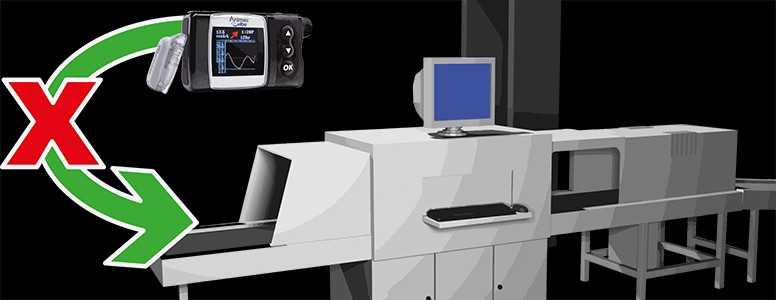Airport security teams across the UK have been reminded of insulin pump policies after a family campaigned for better understanding about the medical devices.
In June, George Magee, 14, was refused access to a flight from Dubai to Heathrow because he was wearing one. The teenager with type 1 diabetes from Waterlooville in Hampshire was told he had to remove his pump so it could be put through the X-ray machine.
Despite staff being told of the medical consequences which removal might cause, such as raised blood sugar levels, it took several hours for the matter to be dealt with.
Since then, George’s mother Rachel Humphrey launched a campaign (pictured is the campaign image) to make sure all airports in the UK were fully briefed on the rules surrounding medical devices, such as insulin pumps.
Information Note
Policy manager Peter O’Broin from the Airport Operators Association has written to Mrs Humphrey and explained that an Information Note has been issued to all UK airports.
He wrote: “Airports are aware that a passenger should not be asked to remove a medical device, such as an insulin pump, for screening, and that all passengers having a hand search in private may have a travelling companion with them if they wish.”
Mr O’Broin also advised that passengers affected should “speak to security personnel at the screening point to advise of any medical screening requirements and ensure that they carry medical confirmation from their practitioner so that screening may be undertaken accordingly”.
Mrs Humphrey told Diabetes.co.uk: “I am so glad that the issue is being taken so seriously. The response from other insulin pump users revealed indisputable evidence that confusion regarding insulin pumps at airport security is prevalent and a global issue.
“I hope that the recent results from officials are going to help airport staff understand that medical devices cannot be scanned.”
Alternative security screening
Mrs Humphrey also met with Andrew Murray, Security Regulation Manager, and Peter Foote, Security Compliance Manager, both of whom are based at Gatwick Airport.
“Mr Foote explained Gatwick’s protocol for passengers with insulin pumps, which is for them to opt for alternative security screening by way of a hand search in a private room,” she said.
“Peter suggested that passengers allow an extra 30 minutes to their arrival time at the airport and that they carry a letter from their medical team on official letterhead, recently dated (within 12 months), explaining that the person wears an insulin pump and must avoid going through electrical equipment including X-ray machines and full-body airport scanners. The letter must also be signed by the medical professional.”
The advice protocol is in line with the letter Mrs Humphrey received from Mr Andrew Haines, Chief Executive of the UK Civil Aviation Authority which outlined the procedure for insulin pumps (and other medical devices) at airport security.
However, Mrs Humphrey’s online campaign, which has attracted nearly 5,000 signatures, has shown that not all staff are following the correct protocol.
She said: “I explained that although Gatwick’s security officers have received training on medical equipment, including insulin pumps, our own experiences and comments received on our own petition page show that on some occasions these alternative processes have not been offered to passengers.”
What's new on the forum? ⭐️
Get our free newsletters
Stay up to date with the latest news, research and breakthroughs.






